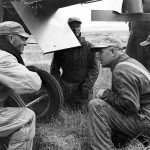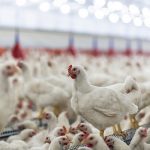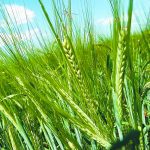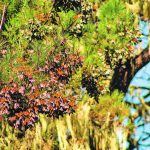Report says regulatory framework won’t allow much to happen on climate change and in some cases works against it
If Canada hopes to achieve its agricultural potential, it will need to at least keep up with American and other competitors who are doing much more to support their farmers’ efforts. That’s one of the main conclusions of the New Ag Deal: Four Policy Transitions for a Climate Smart Food Powerhouse, a report written by […] Read moreNews

Grain marketing debate was long and heated
A clash of visions between open and controlled markets dominated the prairie ag landscape for much of the last century
Murray Fulton didn’t hesitate when asked to identify an overarching theme in grain marketing on the Canadian Prairies over the last century. “It’s the big question — should you rely on markets, or should you rely on some kind of more controlled system, whether it’s co-op owned, or government controlled?” said the University of Saskatchewan […] Read more
War veteran nears 100th birthday
The aircraft mechanic from Saskatchewan was posted in England, Holland and Germany during the Second World War
MAPLE CREEK, Sask. — In December 1942, just days before Christmas and days after his 19th birthday, Robert Tracy Cross left the family farm and headed five miles into Yorkton, Sask. There, he signed up for the war effort. “I figured maybe they needed a little more help,” said the Second World War veteran who […] Read more
Avian flu lands in B.C.

Malt barley varieties tested in China

Art of whisky starts with science of chemistry
Rye’s secret weapon is its hardy kernel and physical structure, an environmental armour that provides a sensory punch
This is part of an ongoing series of stories exploring rye, the crop, as it becomes Rye, the whisky. Many tipplers talk about whisky-making as a craft or an art. But long before whisky can become a work of art, the chemistry’s got to be done right. Whisky’s flavours come from the interplay of a […] Read more
Researchers find temperature sensors on plant roots
Knowing that roots integrate temperature information independent of shoots may help breeders develop better varieties
Plants respond to the ambient temperature with growth patterns that adjust as the temperature changes. But how they do it has remained a mystery. Recently, researchers at Martin Luther University in Halle-Wittenberg, Germany, discovered that roots’ temperature and sensing systems are independent of the plant’s shoots. The study could lead to new methods in plant […] Read more
Water sharing agreements ‘helpful’ in a drought
As reservoir levels stabilize in southern Alberta, a consulting company says it’s crucial that all stakeholders work together
Irrigation districts in southern Alberta managed a tough growing season as drought maintains a stubborn hold and calls for maintaining co-operation between stakeholders and better water storage infrastructure continues. From the Milk River along the U.S. border to the Hay River running into the Northwest Territories, 50 water shortage advisories are currently in place across […] Read more
Sask. farmer tracks down bison rubbing stones
Landowners are asked to take photos of rubbing stones and share them with others as a first step in creating a database
A Saskatchewan-based farmer and agricultural researcher is embarking on an initiative to document bison rubbing stones and share the special place they have on the Prairies. Rubbing stones are traditionally large boulders found on the Prairies, which were left following the retreat of the ice sheets that once covered the plains. They subsequently were polished […] Read more
Steps can be taken to save monarch butterflies
Conducting population counts and planting natural habitat such as milkweed can help keep that numbers at viable levels
The monarch butterfly migration is a rare phenomenon, taking several generations to make one round trip. All along their migration route, from Canada to Mexico, efforts are being made to protect existing overwintering areas, or to re-establish historic ones. This species, through its drastic decline in population since 2018 at only one percent of their […] Read more





